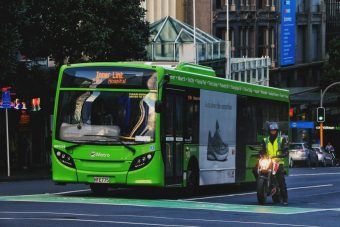
The Council and the European Parliament reached a temporary political agreement on CO2 emission standards for heavy-duty vehicles, to reduce these emissions in the road transport sector, but also set new targets for 2030, 2035 and 2040. The new rules will contribute to the fulfilment of the EU’s climate ambitions for 2030 and reach climate neutrality by 2050.
Furthermore, the goal is to boost the share of zero-emission vehicles in the number of heavy-duty vehicles throughout the EU, while ensuring the preservation and improvement of innovations in the sector and its competitiveness, the Council’s website says.
The agreement is provisional until formal adoption by both institutions.
It was also agreed that the scope of the regulation should be extended to include almost all new heavy-duty vehicles with CO2 emissions certificates, such as light trucks, city buses, coaches and trailers, subject to emission reduction targets.
The CO2 reduction targets set out in the regulation will not apply to small manufacturers and vehicles used for mining, forestry and agriculture, as well as vehicles used by armed forces and fire departments and vehicles used in civil protection and health care.
The interim agreement also extends the scope of the regulation to professional vehicles such as garbage trucks or concrete mixers at a later stage, i.e. in 2035. Additionally, the Commission will analyze the possibility of including smaller trucks, under five tonnes, in the scope.
This agreement also deals with the issue of retrofitted vehicles, i.e. conventional vehicles converted into zero-emission vehicles, enabling the transfer of such vehicles between manufacturers. It was agreed that the Commission is tasked with assessing the need to facilitate the take-up on the market of retrofitted heavy vehicles through harmonized rules for their use by 2025.
More:
- ELECTRICITY DEMAND FOR E-VEHICLES WILL GROW RAPIDLY
- EKO FOND—SUPPORT FOR THE DEVELOPMENT OF ELECTROMOBILITY IN MONTENEGRO
- SMART CHARGING INFRASTRUCTURE FOR EV IN BUILDINGS—PARKING AND GARAGES SOLUTIONS
New emission reduction targets
In line with the EU’s climate targets for 2030 and beyond, the Council and Parliament maintained the targets set by the Commission in its proposal for a 45 per cent reduction in 2030, 65per cent in 2035 and 90 per cent in 2040, in addition to the reduction target until 2025 by 15 per cent that was already foreseen in the current regulation. These targets will apply to heavy trucks over 7.5 tonnes and buses.
It was also agreed that the target for trailers was reduced to 7.5 per cent and for semi-trailers to 10 per cent. There is also a new definition of what constitutes an e-trailer, in order to bring legal clarity and adapt the existing regulation to the technical development of this new type of trailer, considering the potential of e-trailers to contribute to the reduction of CO2 emissions.

The proposed amendment also introduces a goal of 100 per cent zero emissions for city buses by 2035, while an intermediate goal of 90 per cent is set for this category by 2030. Intercity buses are excluded from this amendment.
The next steps include submitting this temporary agreement to the Committee of the Permanent Representatives of the Governments of the Member States to the European Union and the parliamentary committee for the environment for adoption. If approved, the agreement will then have to be formally adopted by both institutions, after revision by legal linguists, before being published in the Official Journal of the EU and entering into force.
The Council and the Parliament officially agreed on their positions on the amended regulation in October and November 2023.
This is a significant move because the heavy-duty vehicle sector is responsible for over 25 per cent of greenhouse gas emissions from road traffic in the EU.
Energy Portal



